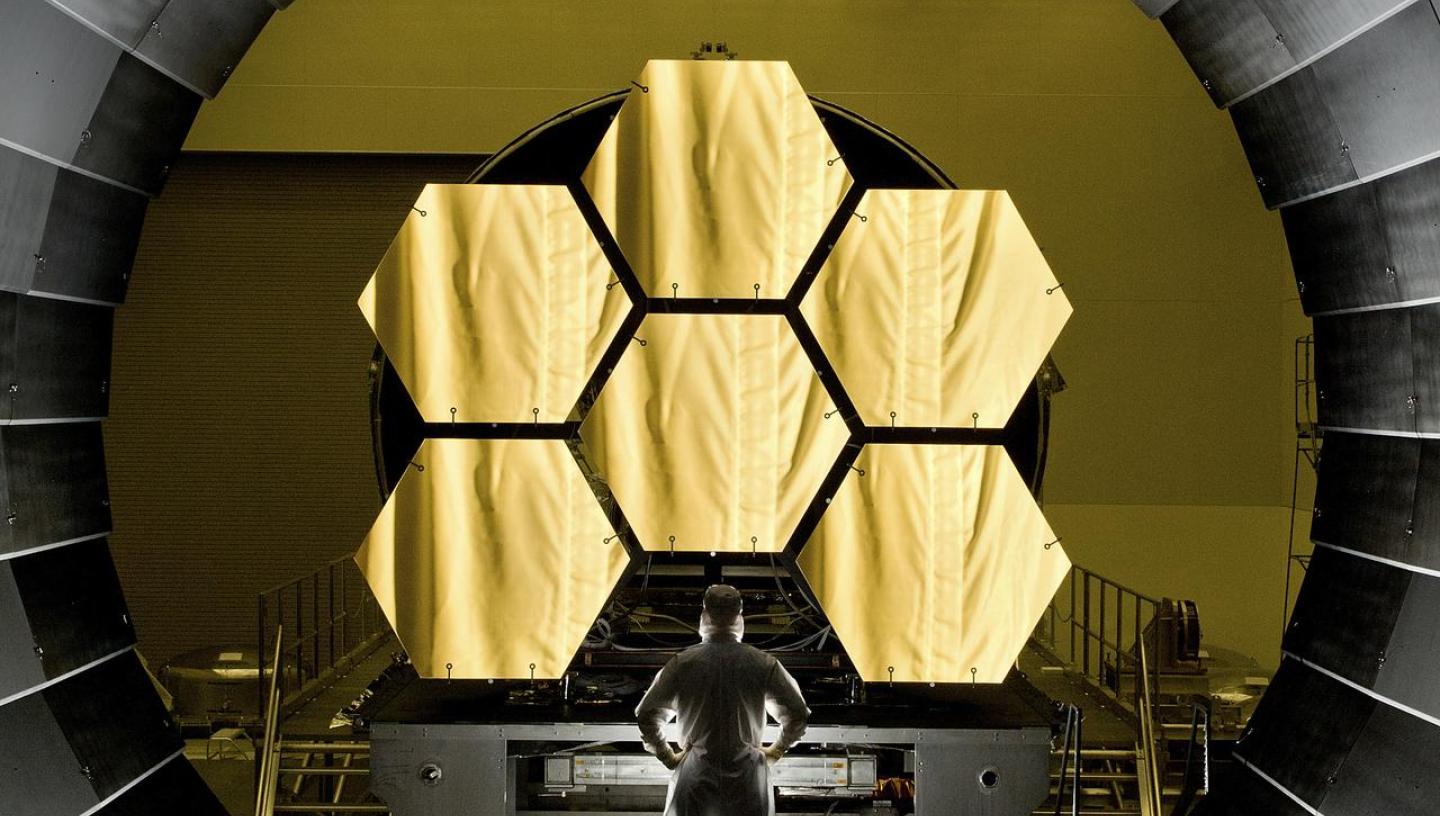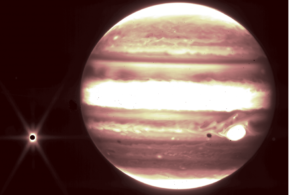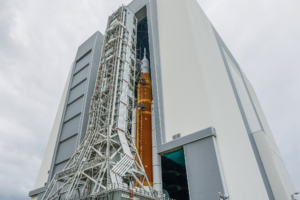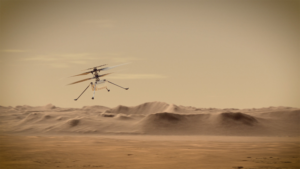
The James Webb Space Telescope Is Finishing Its Final Tasks
For many years now, astronomers have been looking into the unknown and trying to discover more about us and the universe we live in. The James Webb Space Telescope is one of the most advanced telescopes ever made and sent into space. Now around half a year since being launched, the space telescope is extremely close to being ready for consistent science operations.
After an initial launch in late 2021, Webb completed hundreds of deployments, aligned its mirrors, worked on each of its instruments, and much more. Thankfully, throughout this complex process, NASA has helped provide updates on information on the current progress. Recently, the agency gave another update this time highlighting that Webb is nearly set to explore the solar system.
The recent tests and procedures have been making sure Webb is ready for the upcoming science operations it’s expected to complete. This included a recent test that saw Webb work to focus and continually track a moving object in space. Here I will go more in-depth into the James Webb Space Telescope’s current progress, what’s next, and how long before it’s complete.
Recent Updates

Not long ago, Webb began the instrument modes check-out phase. Here, each instrument has multiple modes of operation. During commissioning NASA tests, calibrates, verifies, and ultimately sign off on each mode signifying that it is ready for science operations. Once the agency has approved all 17 of these modes, NASA’s James Webb Space Telescope will officially be ready to begin scientific operations. As usual, NASA recently provided a few more updates on this process and what Webb has been up to over the past few weeks. Specifically, on May 19th, NASA tweeted saying, “Tracking a package? So did Webb! To prepare for upcoming solar system observations, Webb successfully completed its first test to track a moving object!” In addition to this exciting news, NASA helped give more information of current progress and what to expect in the future.
As of right now, the James Webb Space Telescope is moving through the final phases of commissioning its science instruments, NASA have also begun working on technical operations of the observatory. While the telescope moves through space, it will constantly find distant stars and galaxies and point at them with extreme precision to acquire images and spectra. However, NASA also plans to observe planets and their satellites, asteroids, and comets in our solar system, which move across the background stars of our galaxy. Webb needs to be able to lock on to these objects and track them with sufficient precision to obtain images and spectra. The Webb team recently completed the first test to track a moving object. The test verified that Webb could conduct moving target science! As NASA continues to move forward through commissioning, they will test other objects moving at various speeds to verify they can study objects with Webb that move throughout the solar system.
Webb’s Plans

In terms of the opportunities Webb will offer, NASA asked Heidi Hammel, Webb interdisciplinary scientist for solar system observations, to tell them about the JWST and studying some of Earth’s neighbors. Heidi said, “I am really excited about Webb’s upcoming first year of science operations! I lead a team of equally excited astronomers eager to begin downloading data. Webb can detect the faint light of the earliest galaxies, but my team will be observing much closer to home. They will use Webb to unravel some of the mysteries that abound in our own solar system.
“One of the questions I get asked frequently is why we need a powerful telescope like Webb to study our nearby solar system. We planetary scientists use telescopes to complement our in situ missions (missions that we send to fly by, orbit, or land on objects). One example of this is how Hubble was used to find the post-Pluto target for the New Horizons mission, Arrokoth. We also use telescopes when we don’t have in situ missions planned – like for the distant ice giants Uranus and Neptune or to make measurements of large populations of objects, such as hundreds of asteroids or Kuiper Belt Objects (small ice worlds beyond the orbits of Neptune, including Pluto), since we can only send missions to just a few of these.
“The Webb team has already used an asteroid within our solar system to run engineering tests of the ‘moving target’ (MT) capability. The engineering team tested this capability on a small asteroid in the Main Belt: 6481 Tenzing, named after Tenzing Norgay, the famous Tibetan mountain guide who was one of the first people to reach the summit of Mount Everest. Bryan Holler, at the Space Telescope Science Institute, had a choice of about 40 possible asteroids to test the MT tracking, but, as he told our team: “Since the objects were all virtually identical otherwise, picking the one with a name linked to success seemed like a no-brainer.” We like that sort of thing.
“My role with Webb as an ‘Interdisciplinary Scientist’ means that my program uses all of the capabilities of this forefront telescope! We need all of them to truly understand the solar system (and the universe!). Our solar system has far more mysteries than my team had time to solve. Our programs will observe objects across the solar system: We will image the giant planets and Saturn’s rings; explore many Kuiper Belt Objects; analyze the atmosphere of Mars; execute detailed studies of Titan; and much more! There are also other teams planning observations; in its first year, 7% of Webb’s time will be focused on objects within our solar system.
“One exciting and challenging program we plan to do is observe ocean worlds. There’s evidence from the Hubble Space Telescope that Jupiter’s moon Europa has sporadic plumes of water-rich material. We plan to take high-resolution imagery of Europa to study its surface and search for plume activity and active geologic processes. If we locate a plume, we will use Webb’s spectroscopy to analyze the plume’s composition.
“I have a soft spot in my heart for Uranus and Neptune. Indeed, it was the lack of a mission to these very distant worlds that got me involved in Webb so many decades ago. The Uranus team hopes to definitively link the chemistry and dynamics of the upper atmosphere (detectable with Webb) to the deeper atmosphere that we have been studying with other facilities over many decades. I’ve spent the past 30 years using the biggest and best telescopes humanity has ever built to study these ice giants, and we will now add Webb to that list.
“We have been planning for Webb observations for over twenty years, and that has gone into overdrive now that we are launched, deployed, and focused! I’ll note that nearly all of my team’s solar system data will be freely available to the broad planetary science community immediately. I made that choice to enable more science discoveries with Webb in future proposals.
She finished by saying, “I am gratified to have been able to work with the team for all this time, and I especially want to give a shout out to the thousands of people who collectively have enabled this amazing facility for the astrophysics and planetary communities. Thank you! Ad astra!”
Here Heidi provided a lot of valuable information on exactly what we should expect from Webb not long from now. As the telescope gets closer and closer to being complete, these exciting opportunities become a reality. As partially mentioned prior, with the telescope optics and instruments aligned, the Webb team is now commissioning the observatory’s four powerful science instruments. There are 17 different instrument “modes” to check out on the way to getting ready for the start of science this summer. An example is near-infrared imaging which will take pictures in part of the visible to near-infrared light, 0.6 to 5.0 micrometers wavelength. This mode will be used for almost all aspects of Webb science, from deep fields to galaxies, star-forming regions to planets in our own solar system. Another example is MIRI imaging which will extend Webb’s pictures from 5 to 27 microns, the mid-infrared wavelengths. Mid-infrared imaging will show us, for example, the distributions of dust and cold gas in star-forming regions in our own Milky Way galaxy and in other galaxies. Once all 17 of these modes have been approved, NASA’s James Webb Space Telescope will finally be ready to begin scientific operations. All of which come after many Webb milestones over the past few months and weeks including finishing alignment and more. It has been decades of work and billions of dollars but the James Webb Space Telescope is almost complete.
Conclusion
While it has been quite a while since Webb launched in late 2021, each day we get closer and closer to the telescope being complete. Once this is the case, Webb will begin consistent science operations and produce large amounts of high-quality images and data. As of right now, the JWST still needs to finish the commissioning of each of the 17 different modes. This along with some updates on the tracking progress, and the telescope is closer than ever. We will have to wait and see how it progresses and the impact it has on the space industry.



